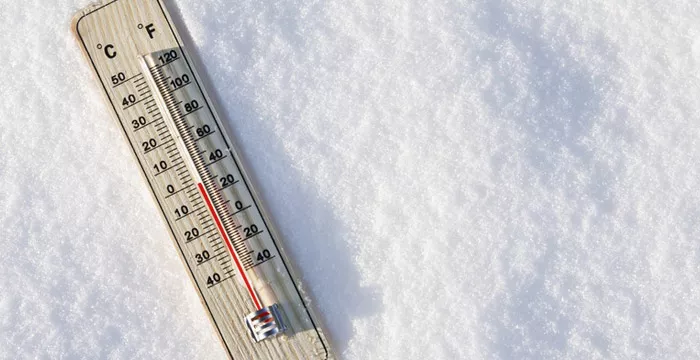
When it comes to comparing temperatures between Celsius and Fahrenheit, confusion is common, especially when you reach extreme cold levels. The question often asked is:
Which is colder: –40 degrees Celsius or –40 degrees Fahrenheit?
At first glance, it may seem like one must be lower than the other. After all, the two scales are different. However, –40°C and –40°F are the same temperature. Yes, that’s correct, both values represent the same degree of cold.
Let’s break down why this happens, what it feels like, where it occurs, and why this temperature matters far more than you might think.

Understanding the Two Temperature Scales
Before we explore why –40°C equals –40°F, it's important to understand how the Celsius and Fahrenheit scales are structured:
Celsius (°C):
- Developed by Anders Celsius in the 18th century
- Freezing point of water: 0°C
- Boiling point of water: 100°C
- Used in most countries worldwide (Europe, Asia, Australia, Africa)
Fahrenheit (°F):
- Developed by Daniel Gabriel Fahrenheit in the early 18th century
- Freezing point of water: 32°F
- Boiling point of water: 212°F
- Used primarily in the United States, and a few Caribbean and South Pacific nations
Because the starting points and intervals between temperatures differ in both systems, values usually do not align, except at one rare and specific point: –40 degrees.
Why Are –40°C and –40°F the Same?
The explanation is based on how the two temperature scales progress. While the Celsius scale increases by 1 degree for every unit of measurement, the Fahrenheit scale increases by 1.8 degrees for the same change in temperature.
When plotted graphically, these two scales move at different slopes, and their values only intersect once, at -40. That is:
- -40 degrees Celsius is exactly equal to -40 degrees Fahrenheit.
- This is a mathematical certainty, not a coincidence.
At this unique point, the difference between the starting points and the rate of change of each scale perfectly aligns. It is the only temperature where you can say, with full accuracy, that Celsius and Fahrenheit measure the same value.
What Does –40 Feel Like?
While the math is interesting, the reality of –40 is much more intense — and dangerous. At this temperature:
- Human skin can begin to freeze within 5 to 10 minutes of exposure.
- Breathing becomes painful, especially if the air is dry and the wind is present.
- Vehicles may not start, as batteries drain faster and fuel thickens.
- Frost can form instantly on exposed hair, metal, and even clothing.
- Water thrown into the air can freeze before it hits the ground.
This is not the kind of weather where you simply wear a heavier coat. In many regions, –40 is considered an emergency condition where being outdoors for more than a few minutes can be physically harmful, or even fatal.
Where Do Temperatures Drop to –40?

Although most populated regions of the world never reach this temperature, certain high-latitude and inland areas do experience –40 regularly, especially in winter.
These include:
- Northern Canada, particularly Yukon and Nunavut
- Alaska, during Arctic cold snaps
- Siberia, especially the Yakutia region of eastern Russia
- Scandinavian Arctic regions, including parts of Norway and Sweden
- Parts of Mongolia and northern China
- Occasionally in the Midwest and Northern Plains of the United States
In these places, homes are designed to retain heat, vehicles are equipped with engine heaters, and daily life is adapted to extreme weather conditions.
Why This Matters (Beyond Trivia)
Knowing that –40 is the same in both Celsius and Fahrenheit isn't just a fun fact — it’s practically useful, especially if you:
- Travel between countries with different temperature systems
- Work with international teams in engineering, aviation, logistics, or environmental research
- Follow global news or scientific reports involving extreme weather
- Interpret warning systems or appliance settings that use unfamiliar units
At –40, there’s no need for conversion, debate, or second-guessing. The meaning is clear: this is a severe, life-altering cold.
How It Compares to Other Common Temperatures
To put –40 into perspective, here are a few temperature points across both systems:
| Description | Celsius (°C) | Fahrenheit (°F) |
| Boiling point of water | 100°C | 212°F |
| Hot summer day | 35°C | 95°F |
| Room temperature | 20°C | 68°F |
| Freezing point of water | 0°C | 32°F |
| Cold winter morning | –5°C | 23°F |
| Below freezing | –10°C | 14°F |
| Extreme cold (shared) | –40°C | –40°F |
As you can see, –40 is far beyond the typical cold most people experience — it is a scientific and practical benchmark for extreme weather.
When Temperature Scales Come Together
In a world where Celsius and Fahrenheit often confuse, –40 is the great equaliser.
It’s the one point where the difference between the two disappears, and the focus shifts entirely to what it means for real people: frostbite, failed engines, halted transportation, and slowed-down life.
Whether your country uses °C or °F, whether you're reading a weather report or standing outside with snow crunching under your feet, if it's –40, it doesn’t matter which unit you're using.
It means the same thing: a dangerous cold that demands caution.




Comments